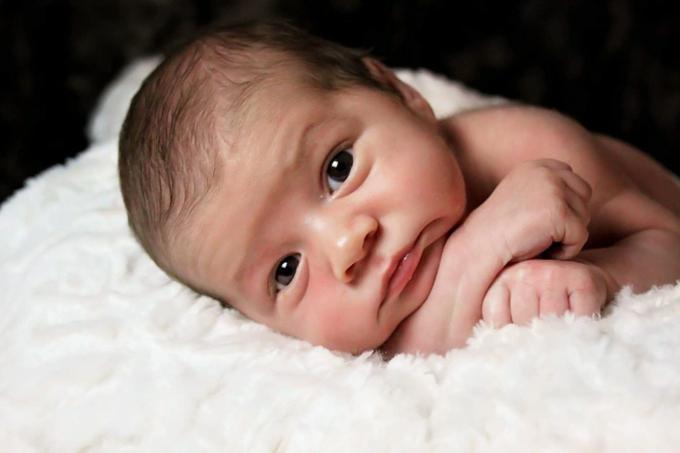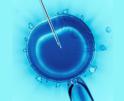
Culture
For the most part, our genetic sex (XX female or XY male) serves as the best guide to the true sex of an individual, though in rare situations, even the sex chromosomes themselves can have anomalies.

Pacholczyk
On rare occasions, babies can be born with ambiguous genitalia, and parents and physicians may be uncertain about whether a newborn is a little boy or a little girl. While testing for sex chromosomes is invariably part of figuring out these cases, the genetics alone may not always tell the whole story.
Both genes and physiological factors like hormonal conditions in the womb can contribute to our primary and secondary sex characteristics and, unsurprisingly, disorders in our genes or our in utero hormonal milieu can contribute to deflecting the development of our maleness or femaleness.
For the most part, our genetic sex (XX female or XY male) serves as the best guide to the true sex of an individual, though in rare situations, even the sex chromosomes themselves can have anomalies. For example, when somebody is born with Klinefelter Syndrome (XXY) they develop not only as a male due to the presence of the Y chromosome and its testosterone-producing influence, but also as a "feminized" male because of the influences of the additional X chromosome.
When strong hormonal influences are at play, as in another disorder called Congenital Androgenital Syndrome, a genetically normal XX female can have increased testosterone production by her adrenal glands, resulting in the development of external male-like genitalia, even though she also has ovaries, a vagina, and a uterus.
While the term "intersex" is sometimes used to describe situations where an individual has non-standard genital anatomy, it typically has a broader range of meanings. Some have argued that a person has to be born with both ovarian and testicular tissue to count as being intersex, but "intersex" is an imprecise term that can describe a range of situations in which a person is born with an internal reproductive anatomy or an external sexual anatomy that is not in accord with the typical expectations for femaleness or maleness.
Sometimes the suggestion is made that intersex individuals are, in fact, neither male nor female, but fluid, malleable or "bisexual," with sexual identity residing somewhere between male and female. This kind of explanation is untenable.
Human beings, along with most other members of the animal kingdom, are marked by an ineradicable sexual "dimorphism," or "two-forms," namely, male and female. When problems arise in the development of one of these forms, this does not make for a new "third form," or worse, for an infinite spectrum of different sexual forms.
Instead, intersex situations represent cases in which a person is either male or female, but has confounding physiological factors that make them appear or feel as if they were of the opposite sex, or maybe even both sexes. In other words, the underlying sex remains, even though the psychology or gender they experience may be discordant. Put another way, intersex individuals may be "drawn away" from their intrinsic male or female sexual constitution by various anatomical differences in their bodies, and by opposing interior physiological drives and forces.
This can be further complicated because of strong cultural forces that contribute to the confusion by sanctioning a paradigm of complete malleability in human sexual behaviors that militates against an understanding of sex-based "hard-wiring."
Even though it may not be popular to affirm the fact, people suffer from sexual development disorders in much the same way that they suffer from other kinds of developmental disorders, whether of the cardiac/circulatory system, of the nervous/intellectual system or others. No one, of course, should be subjected to bias or mistreatment due to a bodily disorder they may have been born with, but in treating such persons, we always strive to return their cardiac or intellectual functions to their proper baseline, rather than inventing a new abnormal as the norm and defining that as a "treatment," as some are tempted to do with sexual development disorders.
While a newborn's "intrinsic maleness" or "intrinsic femaleness" may be difficult to assess in certain more complicated intersex cases, the point remains that there is an "intrinsic" or "underlying" sexual constitution that we must do our best to recognize, respect, and act in accord with. We must carefully acknowledge, nurture and accept our given embodied sexual nature as male or female. Willfully denying or acting against that given nature will constitute little more than a prescription for disillusionment and dishonesty.
Pope Benedict, in a December 2013 address, echoed these concerns when he mentioned the errors found in various new philosophies where "sex is no longer a given element of nature, that man has to accept and personally make sense of...."
To live in an ordered way, with an ordered masculinity or femininity, is certainly one of the great challenges of our time, and we can only undertake this important task by insisting on the correspondence of our minds to reality -- especially to the deeply inscribed reality of our unique embodiment as male or female.
- Father Tadeusz Pacholczyk, Ph.D. earned his doctorate in neuroscience from Yale and did post-doctoral work at Harvard. He is a priest of the diocese of Fall River and serves as the Director of Education at The National Catholic Bioethics Center in Philadelphia,
Recent articles in the Culture & Events section
-
'Dignitas' and the mediaRussell Shaw
-
Scripture Reflection for April 14, 2024, Third Sunday of EasterDeacon Greg Kandra
-
St. Helena's House is established in the South EndThomas Lester
-
Is this synodality?Russell Shaw
-
Poking the hornet's nest of IVFFather Tadeusz Pacholczyk


















